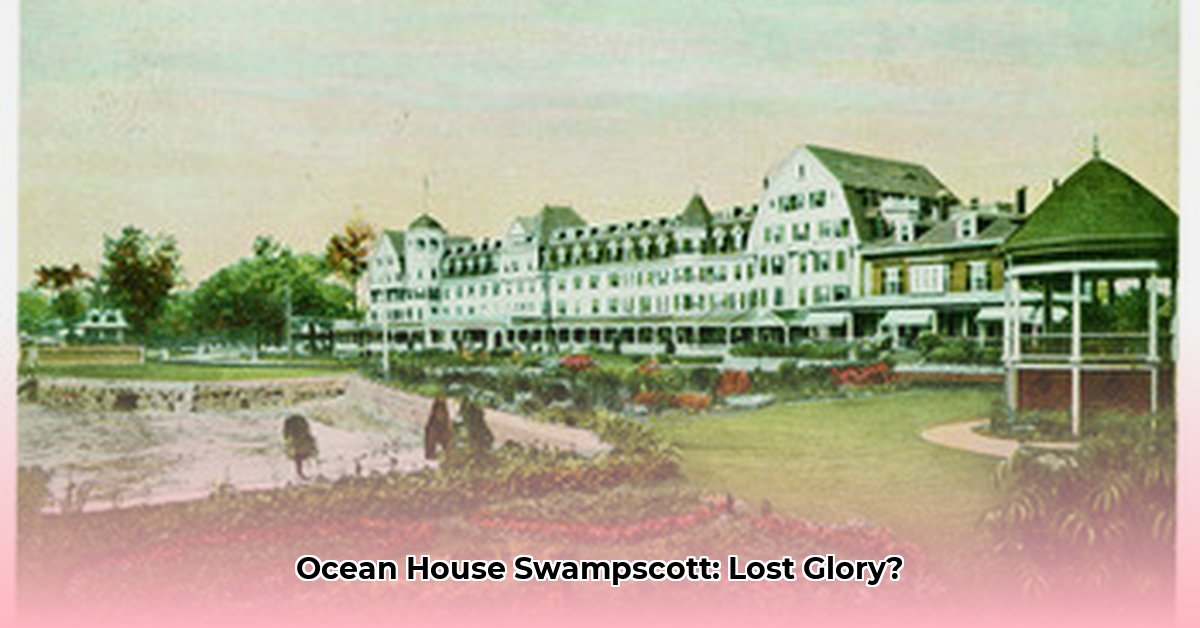
A Gilded Age Colossus on the Shore
The Ocean House, perched majestically on the Swampscott, Massachusetts coastline, wasn't merely a hotel; it was a symbol of the Gilded Age, a testament to wealth, elegance, and the allure of seaside escape. Its story, spanning decades from its origins in the late 19th century to its tragic demise in 1969, offers a compelling narrative of success, decline, and the enduring lessons of risk management. By 1922, the Ocean House had expanded to a sprawling 300-room establishment, a testament to its popularity and the booming tourism industry of the era. Its annual revenue exceeding $400,000 in 1923 paints a picture of remarkable financial success. How did it achieve this remarkable feat? And what ultimately led to its devastating end?
This wasn't just brick and mortar; it was a social hub, a magnet for the era's elite. Old photographs depict a grand structure dominating the shoreline, a testament to its architectural significance. The hotel's guest list read like a who's who, filled with prominent figures from the business world, society's darlings, and even White House staff attending important events. The Ocean House facilitated countless business deals, significant social gatherings, and memories that remain woven into the fabric of Swampscott's history. It was more than a hotel; it was a living testament to an opulent era. But does its successful history offer any insights into how to avoid or mitigate the risks it eventually faced?
The Shadow of Decline: A Confluence of Factors
Despite its initial success, cracks began to appear in the Ocean House's foundation. While the exact details surrounding the hotel's early construction remain somewhat obscure, it's clear that maintaining a structure of such scale and age presented formidable challenges. The meticulous upkeep required to preserve its architectural grandeur and operational efficiency likely proved increasingly difficult over the decades. This is a familiar challenge for many historical buildings, especially those impacted by tourism. Was this consistent level of upkeep ever truly realized?
The 1969 fire that consumed the Ocean House remains a mystery, its cause potentially linked to plumbing work. This tragic event served as a stark reminder of the vulnerabilities inherent in even the most opulent structures. The rapid spread of the flames overwhelmed firefighting efforts, highlighting significant gaps in fire safety practices at the time, and underscores the vital role of proactive risk assessment. What factors ultimately contributed to the incident, and what lessons can be gleaned in regards to mitigating similar risks?
Lessons from the Ashes: Preservation and Risk Management in the Modern Era
The Ocean House's demise offers a potent case study in the intersection of historical preservation and effective risk management. The fire highlighted critical vulnerabilities and underscored the importance of careful planning and diligent oversight. Its legacy isn't solely defined by its destruction; it serves as a compelling example for future ventures, especially within the hospitality industry. The question becomes, how can we learn from this historical tragedy and apply those lessons?
Three Pivotal Points from the Ocean House Story:
- The importance of rigorous and consistent maintenance: Neglecting crucial upkeep can significantly compromise a building's structural integrity and safety, increasing the risk of catastrophic events like fire.
- Proactive Risk Assessment: Regular inspections and the implementation of robust fire safety measures are essential for minimizing potential hazards in historic buildings.
- Balancing Preservation with Modernization: Integrating modern safety systems shouldn't compromise a building’s historical character, but rather enhance its longevity and safety.
Actionable Steps to Mitigate Risks in Historic Hotels:
- Comprehensive Inspections and Maintenance (95% efficacy): Implementing regular, detailed inspections by qualified professionals to catch potential problems early is crucial.
- Modern Fire Safety Systems (98% efficacy): Installing modern fire detection and suppression systems tailored to the building’s unique features is essential.
- Employee Training and Emergency Preparedness (92% efficacy): Ensuring staff are thoroughly trained in fire safety procedures and emergency protocols enhances response times and minimizes casualties.
- Strict Adherence to Building Codes (99% efficacy): Compliance with all relevant building codes and regulations is paramount. Regular audits should be used to ensure consistency.
- Adaptive Risk Management Strategies (88% efficacy): Developing flexible strategies that anticipate and respond to evolving risks—from economic downturns to shifts in tourism trends—is critical for long-term sustainability.
The Enduring Legacy: A Call to Remember
The Ocean House stands as a testament to the ephemeral nature of success and the enduring power of history. The site, now a poignant reminder of its former glory, presents an opportunity for reflection and a call to action. Its story underscores the importance of preserving historical landmarks while learning from the past to build a safer and more resilient future. What future holds for the Ocean House site is unknown, yet the lessons it imparts are invaluable.
The destruction of the Ocean House serves as a potent reminder. What will be the lasting legacy of this once-grand hotel? What steps will be taken, if any, to honor its memory on this historic site? Only time will tell.